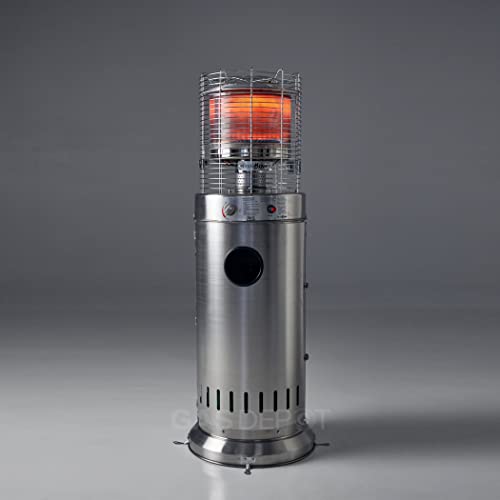The Comprehensive Guide to Gas Patio Heaters
As outdoor living becomes increasingly popular, gas patio heaters have actually become a vital element for extending the outdoor entertaining season. Whether for a comfortable evening with friends or a dynamic family event, these heaters offer warmth and comfort that can change any outdoor space. This short article checks out the numerous elements of gas patio heaters, including their types, advantages, operational mechanics, maintenance ideas, and factors to consider for buying one.
What is a Gas Patio Heater?
A gas patio heater is a kind of heating home appliance created specifically for outdoor use. Typically fueled by propane or natural gas, these heaters generate heat to combat the chill of the night air, enabling outdoor social activities to continue even under cooler temperatures.
Types of Gas Patio Heaters
Gas patio heaters come in several various styles, each fit for different needs and aesthetic appeals. The common types include:
Freestanding Heaters:
- These are the most common type and are typically tall, with a large base and a heater element at the top.
- They can easily be moved and are ideal for different outdoor settings.
Tabletop Heaters:
- Smaller and more compact, tabletop heaters are designed to rest on tables or other surfaces.
- They provide heat for smaller sized areas and are generally simpler to keep.
Wall-Mounted Heaters:
- These are repaired to a wall and are an excellent option for outdoor patios with minimal space.
- They use a more permanent heating option and can complement outdoor decoration.
Patio Fire Pits:
- While not exclusively heaters, gas fire pits offer heat and ambiance all at once.
- They can function as a focal point for outdoor gatherings.
| Heater Type | Description | Best For |
|---|---|---|
| Freestanding | Tall, mobile units with a heating element on leading | Big open locations |
| Tabletop | Compact models perfect for table surface areas | Small gatherings |
| Wall-Mounted | Repaired systems supplying constant heat | Smaller sized patio areas |
| Patio Fire Pits | Integrated heating and decorative feature | Ambiance and warmth |
Benefits of Gas Patio Heaters
Purchasing a gas patio heater uses numerous benefits:
- Extended Outdoor Enjoyment: Gas heaters allow property owners to enjoy their patios even during chillier months.
- Quick Heating Capability: Gas heaters heat up quickly, providing instant remedy for the chill.
- User-Friendly Operation: Most gas heaters feature simple ignition controls for ease of usage.
- Aesthetic Appeal: Many gas heaters are developed to be aesthetically attractive, boosting the general appearance of your outdoor space.
- Versatile Fuel Options: Availability of both propane and natural gas designs caters to different needs and preferences.
Functional Mechanics
Gas patio heaters run by transforming fuel into convected heat. Here's a simplified breakdown of how they work:
- Fuel Source: Most gas heaters utilize propane or gas. The kind of fuel affects performance and schedule.
- Ignition System: Most designs include either a manual ignition (utilizing a lighter or match) or an electronic ignition (push-button).
- Heating Element: Once fired up, gas streams through a burner, where it is combusted to create heat. her latest blog spreads from the heating aspect.
- Heat Diffuser: Some heaters have a reflector to help disperse warmth more evenly throughout a broader location.
Fuel Comparison
| Fuel Type | Pros | Cons |
|---|---|---|
| Propane | Portable, extensively available | Needs tank replacement/refill |
| Natural Gas | Cost-efficient if linked to a supply | Setup more complex |
Maintenance Tips for Gas Patio Heaters
Appropriate care will extend the life of gas patio heaters. Here are some necessary maintenance tips:
- Regular Cleaning: Keep the heater clean from dirt and debris. Routinely clean down the surface areas.
- Inspect Gas Supply Lines: Check for leaks or fractures in the gas lines. Usage soapy water to spot leaks by observing bubbles.
- Seasonal Checks: Before the use of a heater, check all components and repair work or change any damaged parts.
- Storage: During off-seasons, keep the heater in a dry place or cover it for defense.
- Expert Servicing: Consider an expert check-up each year, especially for gas models.
Factors to consider When Purchasing a Gas Patio Heater
When picking a gas patio heater, keep the following consider mind:
- Heating Capacity:
- Measured in BTUs, a greater BTU score supplies more heat.
- Size and Weight:
- Depending on the space readily available and whether the heater needs to be portable.
- Material:
- Stainless steel heaters provide toughness and resistance to rust and rust.
- Design:
- Choose a design that matches your outdoor decoration.
- Safety Features:
- Look for automatic shut-off features or security tilt valves to avoid accidents.
FAQs
Q: Are gas patio heaters safe to use?A: Yes
, when utilized according to the manufacturer's guidelines and security standards, gas patio heaters are safe. Constantly guarantee appropriate ventilation.
Q: How long can one propane tank last?A: A standard 20 lb
propane tank can last anywhere from 8 to 30 hours, depending on the heat setting. Q: Can gas patio heaters be used indoors?A: No,
gas patio heaters are created for outdoor usage only due to the threat of carbon monoxide gas buildup in enclosed spaces. Q: Do gas patio heaters require assembly?A: Most freestanding models require standard assembly
, while tabletop and wall-mounted options may require more
specific assembly. Gas patio heaters are an attractive option for those looking to boost their outdoor experiences throughout the year.
By comprehending the numerous types, benefits, and operational mechanics, potential buyers can make educated choices that align with their requirements. Correct maintenance and safety considerations will ensure that these heaters stay efficient and safe, supplying convenience to outdoor events for lots of seasons to come. With careful selection and care, a gas patio heater can become a beloved addition to any outdoor home.

